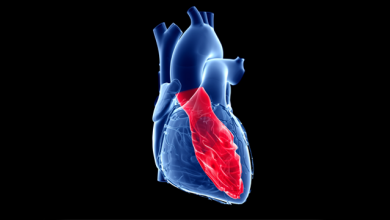Search results
Author(s):
Baldeep S Sidhu
,
Justin Gould
,
Mark Elliott
,
et al
Added:
3 years ago
Author(s):
George Thomas
,
Jiwon Kim
,
Bruce B Lerman
Added:
3 years ago
CRT is an essential treatment for patients with heart failure and reduced ejection fraction as it can restore left ventricular (LV) electrical and mechanical synchrony. It has been shown to increase quality of life, improve functional status, reduce hospitalisation, improve LV systolic function and reduce mortality in properly selected patients.1,2 While CRT is an effective therapy, approximately…
View more
Review of Leadless Pacing
Author(s):
Nadeev Wijesuriya
,
Felicity De Vere
,
Vishal Mehta
,
et al
Added:
1 year ago
Article
Author(s):
Geoffrey F Lewis
,
Michael R Gold
Added:
3 years ago
Since the introduction of CRT more than 20 years ago, its role in mild to severe systolic heart failure has become well established. CRT has been shown to decrease mortality, reduce heart failure hospitalisations and improve functional status in patients with NYHA class II–IV heart failure and QRS prolongation, most commonly with LBBB pattern.1 One of the major limitations of CRT implementation…
View more
Update in Cardiac Pacing
Author(s):
Nishant Verma
,
Bradley P Knight
Added:
3 years ago
Article
Author(s):
Luuk Heckman
,
Justin Luermans
,
Floor Salden
,
et al
Added:
2 years ago
Unmissable EP Papers
Author(s):
Demosthenes G Katritsis
,
Andrew Grace
,
Angelo Auricchio
,
et al
Added:
3 years ago
Article
Author(s):
Henry Chubb
,
Mark O’Neill
,
Eric Rosenthal
Added:
3 years ago
Device therapy is increasingly employed in the management of complex congenital heart disease (CHD). Bradycardias, most often related to sinus nodal dysfunction (SND) or atrioventricular nodal (AVN) block, may necessitate the implantation of pacing devices, while malignant arrhythmias may be treated by appropriate use of implantable cardioverter defibrillators (ICDs). However, there is a complex…
View more
Author(s):
Francis E Marchlinski
Added:
3 years ago
Catheter-based Mapping to Characterise Ventricular Tachycardia
Catheter-based mapping of the left ventricle (LV) to characterise the substrate and origin of ventricular tachycardia (VT) was thought to involve a much greater level of risk and therefore not to be pursued. Mark proved the naysayers wrong with his careful and methodical approach to evaluating the LV endocardium.
What made these…
View more
Author(s):
John M Miller
Added:
3 years ago
The Electrocardiogram
In the entire realm of his work, Dr Josephson’s greatest love was the simple electrocardiogram (ECG). His discernment, based on the ECG, into the patient’s history and disease processes was legendary. Among the more important and insightful contributions he made to our understanding of heart disease and arrhythmias from the ECG are: observations of alternating preexcitation…
View more













